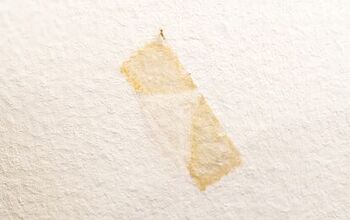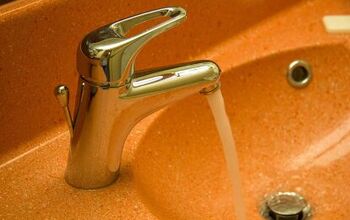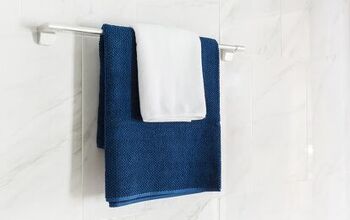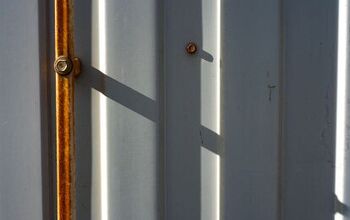How To Properly Remove A Stripped Allen Screw (Step-by-Step Guide)

Working with screws is a must for numerous home improvement or workshop projects. You work with them so often that you may sometimes neglect proper technique while removing or inserting them. That carelessness can lead to the screw being stripped.
A stripped Allen screw is a terrifying sight if it’s embedded in a valuable piece of furniture. You need to get it out but how can you go about doing so without damaging its surroundings? Thankfully, there are ways to extract those problematic Allen screws.
Specially designed screw extractor kits and specially formulated substances can be used to remove stripped Allen screws. Pliers are also capable of removing a stripped screw as long as its head is already exposed. You can also use a rotary tool or screwdriver to create a new indentation that allows the screw to be removed.
Stripped Allen screws can be very frustrating to deal with, but they don’t have to be stuck forever. Check out the tips in this article to find out how you should handle your dealings with stripped screws moving forward.
Do You Need Handyman Services?
Get free, zero-commitment quotes from pro contractors near you.

How Do Allen Screws End Up Being Stripped?
One word best sums up why some of the screws we use end up being ruined. That word is carelessness. Even if you’re an experienced hobbyist who’s spent years working with tools, an instance of carelessness can still lead to problems.
For example, you may not be paying close attention to how you’re inserting the screws while working. Taking your eyes off of the fastener head can lead to it being stripped. If you’re not hitting the right spots while inserting the screw, it can easily be mangled.
Rushing is also a serious problem. Working too quickly to put screws in place can cause your accuracy to suffer. The head of the screw will likely end up damaged as a result of you rushing. The problem could also be related to your tools of choice. Using screwdrivers or drills that are incompatible with the fasteners you chose will lead to stripped screws.
Your drill bit may also wear down over the course of putting up multiple sheets of drywall. A worn-down drill bit is likely going to produce stripped screws upon being used. Even if you use the right tools and pay close attention, you could still strip the screws accidentally. That can happen if you over-tighten the screws.
As you can probably tell, it’s quite easy to end up with stripped Allen screws. Take that as just one more reason why learning how to remove them properly is important.
The Different Methods for Removing Stripped Allen Screws
There are different ways to extract a stripped Allen screw from a piece of furniture or any other kind of surface. However, you cannot use all of the available methods in all situations.
Sometimes, the condition of the Allen screw will determine which tools and techniques you can use. You may also end up having to purchase a new tool in some cases.
Method 1: Turn to Your Trusty Pair of Pliers
If the hex screw you’re looking to remove has a fully exposed head, removing it will be relatively easy. You’ll just need the pliers in your toolbox.
With pliers in hand, grab the head of the hex screw firmly. Make sure that the jaws are locked tightly over the screw head. You can tell the grip of the pliers is tight if the head is compressed a bit.
Now that the jaws of the pliers have secured the screw head, start twisting the screw out. Be careful with how much force you apply to prevent the screw head from breaking off. You can pull out the last bit of the screw by hand to prevent it from breaking. If you encounter resistance, return to the pliers to extract the screw even more.
Don’t Want to Read the Rest? Watch These 3 Easy Tricks
Method 2: Use Another Material to Aid in the Removal of the Stripped Allen Screw
Screws that are not damaged too badly may still be extracted using a screwdriver. You’ll just need some additional help from another material such as a rubber band.
Get a rubber band, piece of thin cloth, or cardboard and lay that on top of the screw head. Take the time to align it properly with the stripped screw. Next, pick up your screwdriver. Check to see that it is the right size for the stripped screw you want to remove.
Start twisting the screwdriver and allow the material covering to help engage the screw. Continue twisting until the stripped screw has been completely removed.
Method 3: Make the Stripped Allen Screw Easier to Remove by Using a Special Substance
Another option to consider if the stripped screw is not deformed is to use a special substance. Items such as Screw Grab are specially formulated to increase friction between your tool and the stripped screw.
Apply a small amount of the substance to the screw head and proceed to extraction. The presence of the substance will make the screw easier to grip and you’ll be able to remove it successfully.
Method 4: Transform the Stripped Allen Screw into a Flat Head
Having some power tools at home can help with extracting stripped screws. If you have a rotary tool, for instance, you can use that create a groove on the head of the screw. A saw can also work if it can make a smaller cut like that.
With the groove created, grab a flat head screwdriver and insert that into the opening. Start turning again until the screw is out of the hole.
Method 5: Modify the Indentation in the Stripped Allen Screw
This next method involves changing the surface of the stripped Allen screw head again. However, you’re not turning it into a flat head this time.
Get your screwdriver, and make sure it’s larger than the tool that should be used on the stripped screw. Point the screwdriver over the head of the fastener and then strike it with a hammer. Don’t hit the screwdriver too hard. Just hit it with enough force that it creates an indentation in the screw head.
You can now use that new indentation to engage the stripped screw better. Also, try hitting the screwdriver again with the hammer to strengthen its hold on the stripped screw.
Method 6: Enlist the Help of a Screw Extractor Kit
Last up, you can also use a screw extractor kit to remove the stripped Allen screw. Many of the widely available screw extractor kits are designed to be used with drills.
The manufacturer will usually indicate how the extractor is supposed to be used. More often than not, you will first have to create an indentation using one end of the included drill bit. You can then flip the bit over and use the other end to extract the Allen screw.
How Can You Prevent Screws from Getting Stripped?
Preventing stripped screws is important given how often you use them in the kitchen, bathroom, and other places throughout your home. The good news is that you don’t have to do much to limit the occurrence of stripped screws.
Start by checking if you’re using the right tools. Take a moment to check if your screwdrivers and drills pair correctly with the screws you’re inserting or extracting.
You should also avoid using worn down tools as much as possible. Tools that are in rough shape can only offer suboptimal performance. Their suboptimal performance can cause damage to items they come in contact with such as screws.
Working carefully is also a good idea in general and especially recommended when it comes to screws. When you’re more mindful of what you’re doing and able to concentrate better, you’re less likely to damage the screw heads.
Do You Need Handyman Services?
Get free, zero-commitment quotes from pro contractors near you.

Related Questions
Are Stripped Allen Screws Reusable?
No, don’t attempt to reuse the stripped Allen screws that you’ve already extracted. Depending on which extraction method you used, the screw may be in no condition to be used anyway.You’re also taking on an unnecessary risk by reusing a stripped screw. If it gets stuck again, you will likely have to cut it out of the surface to remove it. Along with the screw, you may also lose that piece of furniture.
Is Using a Screw Extractor a Good Idea?
As much as possible, you should try to avoid using a screw extractor. The reason why is because those tools deal a lot of damage to the screws. They can also damage the surrounding surface if you’re not careful.Screw extractors are great to have on hand if the screw is really buried in the material. In most cases though, it’s better to try out the other methods of screw extraction first.
How Do You Cover Up the Holes Left Behind after Screw Extraction?
You probably don’t want random holes present on a piece of furniture you’re working on. Unfortunately, they will show up after removing the stripped Allen screws. Don’t worry because you can still cover those holes up.Use a drill to carve out small dowels from a piece of wood that resembles the surface you want to plug. Place those dowels into the holes and make sure they line up with the grain as well as they can.With the dowels in the right spots, you can now secure them better with a hammer. Sanding the surface after the dowels are added will disguise them better.
Related Guides

We are a team of passionate homeowners, home improvement pros, and DIY enthusiasts who enjoy sharing home improvement, housekeeping, decorating, and more with other homeowners! Whether you're looking for a step-by-step guide on fixing an appliance or the cost of installing a fence, we've here to help.
More by Upgraded Home Team















![How To Reset A Whirlpool Cabrio Washer [In 5 Easy Steps!]](https://cdn-fastly.upgradedhome.com/media/2023/07/31/9076531/how-to-reset-a-whirlpool-cabrio-washer-in-5-easy-steps.jpg?size=350x220)











